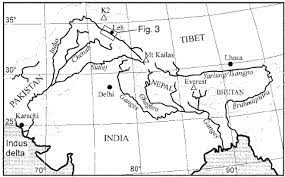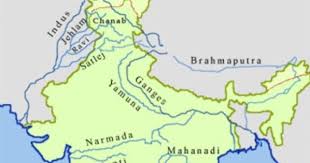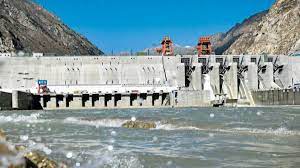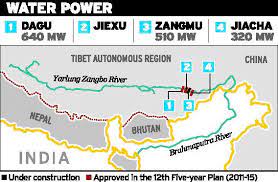In the Second World War nearly 85 million persons perished that reduced the then world population by three percent. Wars are the last resort in a country’s National Security Strategy. Unfortunately; India still does not have one. In 2018 the PM had asked the NSA to conceptualize one for our country, however it is still waiting?
Glaring Absence of a National Security Strategy
We can formulate a National Security Strategy in three steps: Ends, Means and Ways. Ends are the Political Objectives of a country. These should be broken down into National Interests. It is the duty of the Government and people to pursue our national interest. If there are any impediments in our pursuit of our national interest from within the country, those have to be removed. If the obstacle is posed by any other country or countries, their national will have to be overcome so that we can pursue our national interest unhindered.
How do we do it? It is by using our means; the instruments of our National Power. They are Political Power; exuding from a strong government legitimately formed that symbolizes the will of the nation. The political processes coalesce the will of its populace in the hands of the government. Other powers are Economic, Science & Technological, Maritime, Information, Soft and Diplomatic. The diplomats wield these powers through mediation, cooperation, persuasion, inducement, bargaining, implying subtle threats and ultimately warn with open threats. If the will of the opposing nations still does not get modified in consonance with our requirements, then the last power that is applied is the ‘Military Power’. The Military Power is the last bastion and the last arrow in the quiver of the government. If the Military Power fails the nation fails. Hence, it has to be used with all its discretions. It is for this reason that the Armed Forces of our country have to be armed, trained, and spirited with the highest morale to win wars for our country. We need to keep our powder dry as the eventuality of its use can come suddenly without warning. To support the Armed Forces an
effective Intelligence Machinery, needs to be built and sustained to ensure the country is not surprised and each of its actions is deliberate and well thought out before it employs its Armed Force to achieve its political objectives.
Application of all the instruments of national power in pursuit of political objectives through a coherent plan is called the Grand Strategy. It is here the circle of ends, means and ways gets completed. It is not a onetime drafting of the strategy; it has to be reviewed regularly when the geopolitical equations change among nations.
Weaponizing the Water Courses by China
In this spectrum of strategy there is one more power that is hidden that can win wars without firing a bullet. It is by weaponizing the trans boundary water courses. However, it is the product of geography and the power is vested in the hands of an upper riparian country. India is an upper and a lower riparian country as well. The major rivers; the Indus, the Sutlej and the Brahmaputra originate from Tibet and flow into India and then to Pakistan or Bangladesh. India is a lower riparian country for China, Nepal and Bhutan and an upper riparian country for Pakistan and Bangladesh.

Tibet is considered the third pole as it is the third largest source of fresh water after the two poles. More than seven major rivers originate in Tibet and flow to ten countries; Pakistan, India, Nepal, Bhutan, Bangladesh, Myanmar, Thailand, Laos, Vietnam and Cambodia. China is an upper riparian state for all these countries as Indus, Sutlej, Karnali, Saptakosi, Teesta, Manas, Brahmaputra, Lohit, Irrawaddy, Salween and Mekong originate from Tibet. China does not have a water sharing agreement even with one country and believes in ‘prior appropriation’; sovereign rights of a country to divert, use and store water within its territory with no regard to lower riparian countries. In contrast, India has water sharing agreements both with Pakistan and Bangladesh. The Ganga Water Treaty ensures a fixed quantum of waters to Bangladesh even during the lean period thus assuaging its concerns.

China has already weaponized its water courses; in 2000, the Kinnaur floods was caused by China by storing and releasing waters into Sutlej without giving any prior notice. More than 200 lives were lost and also crores worth of property. Again, in 2004, China had constructed a reservoir on Pareechu, a tributary of Sutlej and the embankment broke and torrents of flood waters were unleashed into Himachal Pradesh; however, China had given warning of the impending breach. With these two experiments China has collected data as to how to weaponize The Sutlej. Again, in the winters of 2017; one would remember the massive river Brahmaputra had turned black destroying the entire marine life of the river devastating the lives of lakhs of people who derived their sustenance from the river. China has not yet revealed the reasons for contaminating the water. It is probable that it was experimenting with its long-cherished dream of taking the waters of Yarlung Zangbo (Brahmaputra) to Xinjiang and other dryer regions of North and Northwest China? In the fifties, Mao himself had visualized plans to take waters of Tibet to Beijing and Tianjin for industrialization of the country. Later in 2005; a book was written by Li Leng that the ‘Waters of Tibet will save China”. Here, the author states that the waters will be taken through 1000 Kms pipelines to dry regions of Xinjiang. Hence taking the waters from Tibet and depriving the countries of South Asia and SE Asia has always been a part of Chinese design. China has signed an agreement with India for sharing the data on waters of Brahmaputra and Sutlej in 2002 and 2005 respectively. However, during the Dolam Plateau standoff in 2017, it had weaponized the hydro-data and had stopped sharing it during the period of over two months. A point to note that it charges India $125,000 annually for providing the data though it gives it free to Bangladesh. We should be prepared to take countermeasures against weaponizing the river courses by China. It could stop the flow of water during the lean period and adversely affect agriculture in our NE plains and also in Bangladesh. It could open all the sluice gates during the rainy season to cause heavy floods that could destroy crops and inundate road and rail communications and wash away bridges disrupting mobilization of own troops and their logistics during the period of hostilities. In 1938, Nationalist China had breached the dam on the Yellow River at Kaifeng to drown the advancing Japanese Forces. Though it killed a few hundred Japanese troops, half a million of its own citizens also drowned. India needs to prepare a counter plan to overcome the adverse effects of China’s design.

Yarlung Zangbo originates at Mt Kailash and flows 1200 kms from west to east in the Tibetan plateau absorbing a number of smaller tributaries. Just before entering India, it takes a 200 Kms bend around a massive mountain peak called Namcha Barwa (7600m). Flowing in the Tibetan valley at 4500 meters it loses nearly 3000 meters while traversing the bend and enters Kepang La in Arunachal Pradesh. Here onwards it is called Siang as it enters Assam it is called Brahmaputra. River Siang provides nearly 38 percent of the waters of Brahmaputra. However, on the brighter side; there are other tributaries of Brahmaputra like the Kameng, Subansiri, Dibang and Lohit which can compensate for the shortage of water. Hydrologists and environmentalists have to work on the problem to find an effective alternate plan to augment water of the Brahmaputra. Similar studies have to be carried out on the Indus and the Sutlej on our north western frontiers to counter China’s weaponization of water courses.
India’s Failure to Weaponise Trans Border Water Courses & Indus Water Treaty (IWT) of 1960
In 1960 Nehru signed the IWT with Pakistan under the aegis of the World Bank, giving the three Western rivers; Indus, Jhelum and Chenab to Pakistan leaving Ravi, Beas and Sutlej for India. Nehru in a gush of generosity with the national assets gave away 80 percent of the Indus River System to Pakistan leaving only 20 percent for India. To make matters worse the validity of the treaty is for perpetuity. A Permanent Indus Commission (PIC) was established which was supposed to meet minimum once a year. India has been regularly and sincerely implementing the treaty. In the past 62 years of the treaty, the PIC instead of meeting that many times has met 117 times trying to show off our cooperative attitude to a more and more aggressive Pakistan. After signing the IWT in 1960, Pakistan waged war against India in 1965. We continued with the treaty unhindered. Again in 1971, Pakistan initiated the war with airstrikes from the Western Sector; India was condescending and continued to supply water to the aggressor. Again, in Kargil, Pakistan came and occupied important heights across the LAC and interdicted our strategic road communications near Kargil. The war lasted nearly two months but India was always liberal and continued to supply water to Pakistan. Due to the absence of a comprehensive national security strategy, India was not capable of wielding all its instruments of national power
in a coordinated manner even during wars to subdue our enemy. Ministries were independently functioning without a coherent national strategy and Pakistan continued to send terrorists to cause terror in our country and we continued to facilitate Pakistan by regular meetings of PIC to ensure effective implementation of IWT so that Pakistan gets its 80 percent share of waters. Ridiculous and incomprehensible! Isn’t it?
Pakistan’s reliance on the Indus Water System for agriculture and hydro power is almost total. Any disruption in the waters would have emaciated Pakistan as it is their lifeline. What amazes me; when we have total control over the entire Indus River System and in turn have total control over Pakistan’s entire economy, still we have not been using the leverage to control its behavior. We have accepted its reckless indiscretions and unbridled hostility without even once threatening to revoke the treaty. At last, it happened in 2016, after the Uri attack, PM Modi made a statement that water and blood cannot flow together. Again, a couple of years later Minister Gadkari made a statement that the IWT needs to be reviewed and arrangements should be made to divert the waters of the Western three rivers to the states of Haryana, Punjab and Rajasthan. Pakistan has responded that any effort to revoke the treaty would be an act of war. Yes! We should be mortally scared and Pakistan would keep waging proxy war against us which we need to grin and bear and adhere to the IWT in letter and spirit; otherwise, Pakistan will wage a war against us? Outrageous and ludicrous! We still adhere to the treaty to gain brownie points from the World Bank? I am not sure whether the belated statements have raised any concerns in Pakistan? Or, is Pakistan sure of our predilection to conformism, forbearance and our docile acquiescence and compliance to the treaty giving it the liberty to carry on with its proxy war?
Strategy to Counter Two and Half Front War by Weaponization of Waters
From our side, it is high time we factor the leverage that we have over Pakistan and incorporate it in our ‘National Security Strategy’. India’s threat perception involves a two and half front war. China attacking on our Northern and North Eastern Frontier; simultaneously Pakistan mounting an offensive on our Western Frontier in conjunction with the terrorists unleashed to disrupt our
logistics links to the rear of combat forces. The future wars would unfold in such a way that India has to simultaneously fight on all fronts. This is precisely what we can avoid by warning Pakistan that any act of hostility against our country would negate the IWT. It can pose an existential threat to Pakistan without firing a bullet. However, easier said than done! From our own waters of the three Eastern rivers, we are not able to utilize 2 MAF which we let flow into Pakistan; to utilize, 80 million MAF of the three western rivers flowing into Pakistan requires deliberate building of hydro infrastructures that can take these waters to Haryana, Punjab and Rajasthan. These infrastructures once made, will act as a threat in being against Pakistan to keep her out of future conflicts against us. This coercion would work wonders if properly enunciated and executed.
Now, the question arises as to how to get out of this unfair treaty that has been signed for perpetuity? There are no provisions in the IWT to revoke the treaty. However, there is a Vienna Convention on Laws, Treaties and Agreements. It was signed in 1969 and came into force in 1980. It has an entire chapter on circumstances when a treaty can be revoked. Art 62 of the treaty allows that a treaty can be revoked if there are ‘Fundamental Changes of Circumstances’. Obviously, if a country wages a war on another signatory of the treaty there is a fundamental change in circumstances. It is as much applicable when Pakistan wages a proxy war against India as the treaty premised on the peaceful relations between the two signatories. There are also other provisions such as Art 61 that talks about impossibility of performance due to changed circumstances: Suffice to say that there are enough grounds to revoke the IWT by applying the existing UN provisions, which unfortunately India has never worked upon.
There is an urgent need to have a National Security Strategy and we need to weaponize the water courses to ensure that Pakistan’s support to China is fully neutralized. It is then easier to deal with China as and when it wages war against us.
Weaponizing the Water Courses by China
China is an upper riparian state for all countries of South and SE Asia. There are ten countries who are suffering due to inadequate water due to China’s policy of ‘prior appropriation’. In SE Asia the mighty Mekong has become a pathetic trickle. There are more than seven major dams in China which have appropriated the waters of the river. It flows through five countries of SE Asia; Myanmar, Thailand, Laos, Cambodia and Vietnam. The effort of ADB to share the waters of the Mekong under a Mekong River Commission was scuttled by China and it formed a Lancang-Mekong Cooperative Framework and linked it with its BRI initiative. It thereby circumvented the ADB initiative to share waters.

As already stated, China does not have a single water sharing agreement with any of the countries. China was one of three countries that had rejected the UN Convention on Shared Watercourses -1997. It was passed by 103 countries and came into force in 2014. Though India has not ratified the convention, it has assuaged the two lower riparian countries of Bangladesh and Pakistan with water sharing agreements. China is relentless in its opposition and is working on taking the waters from its Southern rivers to the North that would further curtail waters flowing from Tibet to South and SE Asia.

China has already built a hydro power project at Zangmu on Yarlung Zangbo and plans to build three more dams at Dagu, Jiexu and Jiacha. Though they are touted as hydropower and run of the river projects still, it will severely curtail the water flow of Brahmaputra. What would be the most damaging would be that the Chinese have planned to build in their 14th Five Year Plan 2021-25, a series of 11 more dams on the Great Bend of the river.

The river goes through a canyon longer and deeper than the Grand Canyon Colorado. The river drops nearly 3000 meters, in a stretch of 50 Kms. When completed it is expected to generate 60 gigawatts of power that would be nearly three times more than the ‘Three Gorges Dam’. This will give China total control over the waters of Yarlung Zangbo with the impunity to store water with options to release it during monsoons causing widespread destruction in the Brahmaputra valley. Though there is a UN Environmental Modification Commission that prohibits the hostile use of Environment for military purposes; we all know China well with no respectfor UN Institutions and international order; India would need to counter such threats with its organic capabilities.
Countering China’s Water Weaponization
A lower riparian state can do very little to an upper riparian state. We need to deal with China with our other instruments of national power. I have written about it in the past hence a quick list of our recommended actions. Propagate Two-China Policy and recognize Taiwan as an independent country. Share nuclear and missile technology with Taiwan and assure her the same support that China has been giving it to Pakistan. India needs to export on priority at discounted rate Brahmos Missiles to Taiwan. Form an Indo-Pacific NATO with the Quad Countries. As it is, South Korea, the first Asian country, has joined the NATO cyber research center. It could be that NATO is smelling blood to make inroads into Asia? Incite and support freedom movements in Tibet and Xinjiang just as China is fanning militancy in our Northeast through Myanmar. Prop up HH Dalai Lama and invite him to Arunachal Pradesh to spend a couple of months in a year at Tawang Monastery. Move the Central Tibetan Administration from Dharamshala to New Delhi so that they are better placed to interact with foreign embassies to spread their cause. A similar act like the ‘Tibetan Support and Policy Act 2020 passed by the US House of Representatives should be passed by Indian Parliament that not only covers all issues including HH Dalai Lama’s incarnation and for preserving the water resources of Tibet. India should take initiative to group ten lower riparian countries of China of South and SE Asia and collectively act together against Chinese reckless behavior and force it into water sharing agreements.
Conclusion
It is high time that India learns to utilize all her instruments of national power to formulate a strategy to pursue her national interests. Weaponization of Trans Border Water Courses is a very effective tool against Pakistan which should be used to control its behavior and force her to abide by our wishes. Even the threat of weaponization is adequate to keep under leash. At the same time, we should
develop a skilled foreign policy counter to regulate China’s behavior so that it does not weaponize the trans-border water courses. Holding cards of Tibet, Xinjiang, Taiwan and Quad have the potential to prevent China from using water as a weapon against us. Ultimately, the side that wins is the one who can adopt a bold foreign policy and the political will to execute the policy into action.








